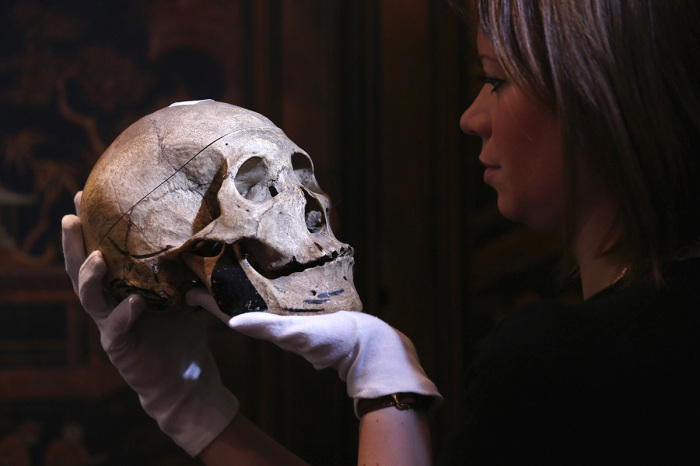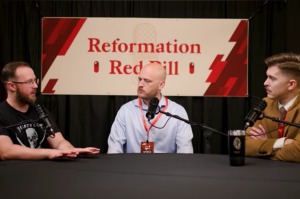Archaeology professor resists push to omit gender when identifying human remains

An archaeology professor says the push to eliminate the gender identification of human remains is akin to “ideologically-motivated fudging" after a student argued on social media that male and female classifications should be omitted because it's unknown how ancient individuals identified themselves.
Earlier this month, Canadian master’s degree candidate Emma Palladino expressed concern in a tweet that archaeologists who locate remains will identify the remains as either male or female — the gender they were “assigned at birth.” Palladino argued that assigning gender to human remains is “bull—.”
"Archaeologists are acutely aware of how culturally and spatially relative the concepts of sex, gender, and identity are. While a bioarchaeologist might identify a set of remains as 'probably female,' it is understood that the gender of an individual is never necessarily the same as their sex, and that gender is a whole spectrum we've barely begun to unpack," she added.
"We can make culturally-specific inferences about gender if we have a good idea of the gender norms+identities within a given culture, but beyond that, it's never a given. ...
"And even IF some s—- archaeologist in the future misgenders you, that will never change who you were, regardless of whether you've medically or socially transitioned, regardless of anything. You are you, a dignified human, and always will be, even in death."
Palladino isn't the only person pushing for gender identity to be omitted from the identification of skeletal remains. An organization known as the Trans Doe Task Force maintains a database of missing or unidentified people it believes self-identified as transgender. Activists in the group are seeking to “explore ways in which current standards in forensic human identification do a disservice to people who do not clearly fit the gender binary.”
Contrary to that view, San Jose State archaeology professor Elizabeth Weiss compared eliminating gender classifications to “ideologically-motivated fudging” in a statement to The College Fix. Weiss said there is a movement among academics “toward getting all of the academy’s favored shibboleths to accord with one another.”
She also asserted that the increased presence of trans-identifying individuals is a trend that is social and not biological,” so “retroactively de-sexing obscures this obvious fact.” In addition, the professor said that assigning biological sex to human remains has improved perceptions about women.
“Some early anthropologists sometimes mistook some robust female skeletons as male skeletons, particularly in the Aleut and Inuit collections; this reinforced false stereotypes that females were not as hard working as males,” she said.
“Over time, biological anthropologists and archaeologists worked hard to determine which traits are determined by sex, regardless of time and culture. This new policy of erasing this progress is a step back for science and women.”
As The Fix reported in February, Weiss is suing San Jose State University for locking her out of its collection of human remains when she had previously been the curator. The professor alleges the school took this action due to her position on the repatriation of human remains.
Weiss doesn't believe remains should be reburied, arguing that they could hold valuable information.
Last year, National Public Radio reported that a DNA analysis of a medieval warrior thought to be female belonged to a nonbinary person. The study was published in the peer-reviewed European Journal of Archaeology.
The grave containing the remains was first discovered in 1968 in Suontaka Vesitorninmäki, southern Finland. The remains were buried alongside a sword and jewelry found in fragments of woolen clothes, which were "a typical feminine costume of the era."
A DNA analysis in the study purportedly showed that the chromosomes are neither male nor female. Ulla Moilanen, the study’s lead author, said the findings are proof that "biology does not directly dictate a person's self-identity.” The researchers concluded that the deceased was likely a male who had Klinefelter syndrome.
According to the British National Health Service, females are typically born with two X chromosomes, and males are born with XY chromosomes. A man with Klinefelter syndrome might be born with an extra X chromosome, in addition to low levels of testosterone and infertility.
While the researchers noted the remains were “badly damaged,” they claim that through the use of modeling, they "found overwhelming evidence that the genetic data of the Suontaka individual most closely resemble an XXY karyotype."
“Although the researchers use the term nonbinary in their study, it's complicated,” NPR reported. “People choose whether to identify as nonbinary, and it's not known how this ancient person identified.”
“Also, many people with Klinefelter syndrome, which is one of the chromosomal patterns under the umbrella term intersex, do not consider themselves nonbinary.”





























